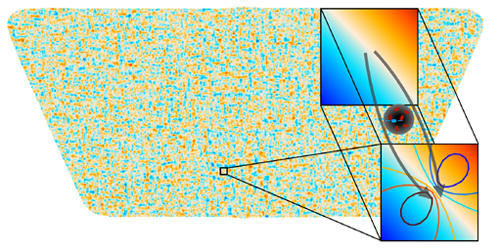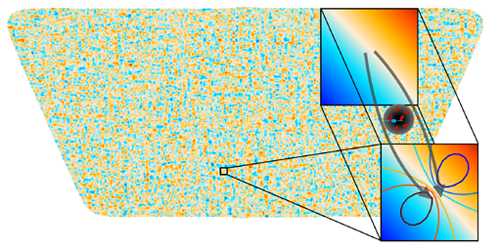Polarization of Cosmic Microwave Background Reveals Mass of Galaxy Clusters
Scientists can estimate the mass of galaxy clusters billions of light years away by measuring how the clusters distort the cosmic microwave background (CMB). This so-called gravitational lensing effect is greatest in the CMB’s temperature distribution, but the signal is contaminated by other astrophysical phenomena in the foreground. Now, an international collaboration of researchers from the South Pole Telescope (SPT) and the Dark Energy Survey (DES) has demonstrated an alternative method that instead uses distortions of the CMB’s polarization. Though faint, this polarization signal is less easily contaminated by the astrophysical foreground—which is largely unpolarized—allowing its use to more precisely and accurately estimate galaxy-cluster mass.
The CMB carries the linear polarization pattern that was imprinted on it when the Universe first cooled enough for neutral atoms to form and light to freely propagate. Theory predicts that this pattern should be modified by massive galaxy clusters, whose gravity imposes a faint dipolar arrangement on the CMB photons. To detect this dipole signature, the team combined the CMB polarization signals from the regions around 18,000 galaxy clusters that had been detected in optical images from the DES. After subtracting an estimate of the background polarization, the researchers were left with a signal that they attributed to gravitational lensing with a confidence level of 4.8 sigma, meaning that the likelihood of it being due to chance is less than 1 in 600,000.
The new lensing-derived measurement will let researchers calibrate estimates of galaxy-cluster mass more accurately. This calibration could offer clues to fundamental mysteries of the Universe, such as neutrino masses and the nature of dark energy and dark matter, whose answers might lie in the formation and evolution of the structures in the Universe.
This research is published in Physical Review Letters.
–Marric Stephens
Marric Stephens is a freelance science writer based in Bristol, UK.





